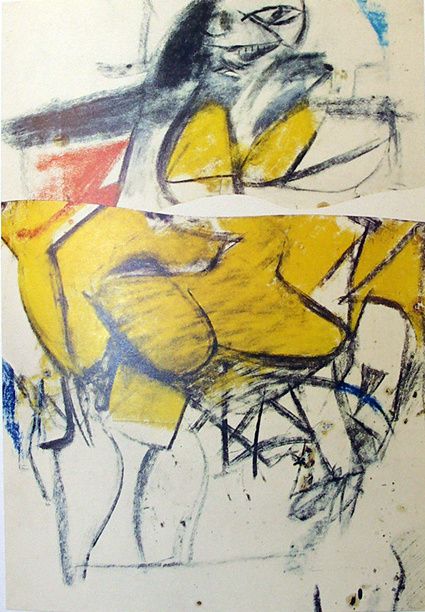After going to the de Kooning exhibit at the Museum of Modern Art, it is pretty clear to me now why Willem de Kooning is considered the father of abstract expressionism. In the majority of his paintings, de Kooning challenges the notion that things must be presented the way they look to us. Instead, he takes things such as landscapes or highways, and totally distorts them into a complex array of scribbles, lines, shapes, and paint blotches and drippings that blend together into workable and enigmatic pieces of art that are interesting to look at and ponder.

He turns some of the paintings upside down so that one can see the dripping paint that goes”up”. Despite the odd shapes, lines, and designs, he does manage to keep some remnant of shape to some of his paintings, as in the head of the painting “Woman 1” above. Perhaps one of the most remarkable characteristics of de Kooning’s work is his knack for collage by integrating random shapes, lines, and figures onto a single page and make it work, as in this piece.

He also had very interesting techniques when it came to the preparation of some of his paintings. Some of his techniques that I remember included applying paint, scraping it off, then repainting; drying paint with newspapers that would leave marks on his paintings, giving them a shallow look; allowing some of the paint to drip in his paintings (see first painting); and the long brush strokes that characterized some of his paintings.
What’s also interesting is de Kooning’s historical progression in terms of his painting style. He started out painting normal objects that are grossly obvious what they are. But as one goes farther and farther into his career, his paintings become far less distinguishable and the abstract element becomes more and more of a staple in his paintings. Also, the size of his paintings tend to get bigger as well.
Before I saw this exhibit, my general impression of “abstractionism” was a bunch of paint blotches and scribbles that are considered art. Now that I’ve seen de Kooning’s work, I can more confidently say that the “abstract” form of painting is unquestionably a respectable and laudable art form.


I always enjoy these retrospectives because it is so interesting to see how my favorite work fits into the trajectory of the artist’s output. In the case of DeKooning, there are a couple of the areas I like more than others, but it was really wonderful to see so much on display at the same time. And I really had a new appreciation of his late work, which is often maligned as less interesting.